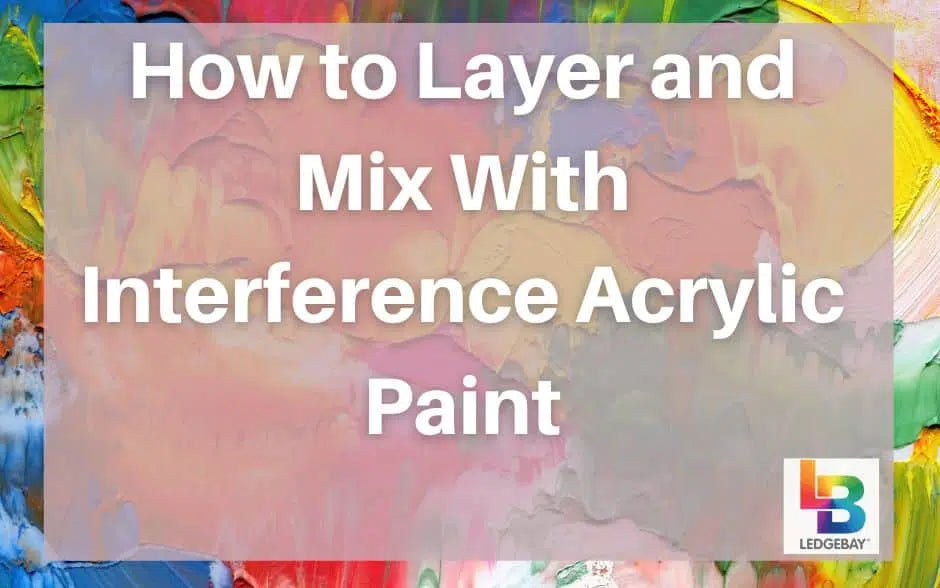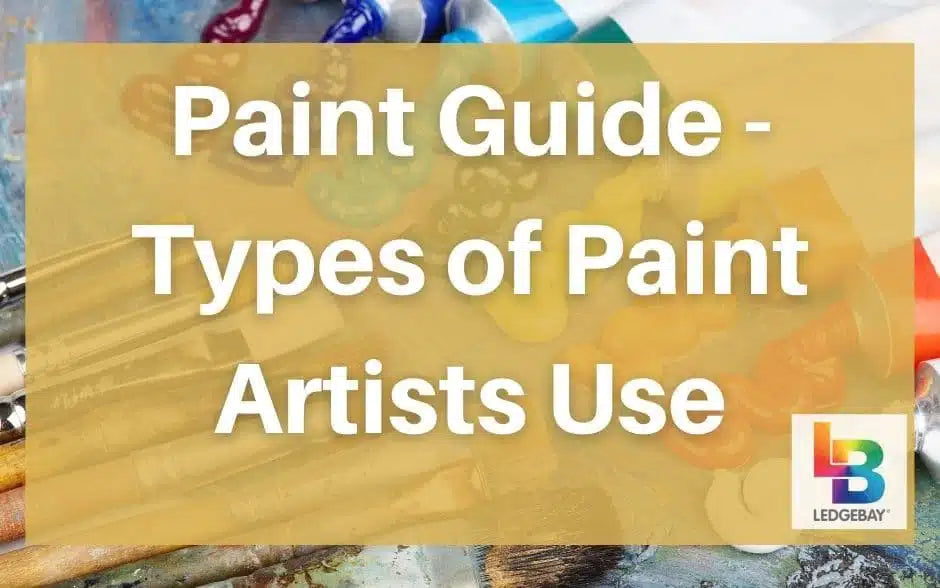Is the ocean calling to you? The sound of waves crashing against the shore, the salty air filling your lungs – does it all make you want to grab a paintbrush and create your own masterpiece? It's easy to be intimidated by the prospect ofpainting waves and water .
It can seem like a complex subject that's difficult to replicate. But with the right tips, anyone canpaint a wave or water scenes. In this guide, we'll provide some basic tips for getting started, including examples of the right colour and wave shape. So whether you're a beginner or an experienced painter, we hope you'll find this guide helpful in establishing your foreground!

At their most basic level, a wave is just energy moving through space in a repetitive pattern. This energy can come from a variety of sources, including light, wind, and earthquakes. Their bluecolor is basically just a reflection of
Ultimately, though,whatever form a wave takes or wherever they occur, all of them follow the same basic principles. So if you're interested in, whether on land or at sea, understanding these principles will be a crucial first step in creating your own beautiful artwork!

Whether depicted in bold brush strokes or subtle shades, they capture the raw power and explosive detail of the ocean. And it is this same energy that powers our own lives as we navigate through daily routines or face big challenges. So when we look at them, we see much more than water--we are reminded of our own resilience and develop the ability to overcome obstacles.
On the other hand, if you want to create a quiet, peaceful wave can evoke feelings of calm and tranquility. When we look at gentle rolling swells lapping against the sand, we've reminded of time spent relaxing with friends and loved ones. With each artwork depicting white water with peaceful waves and sea foams on its surface, we create our fill of a little oasis of calm that we can return to whenever we need a moment of peace.
So whatever feeling or form you want your wave paintings to evoke, having complete understanding of their symbolism will be an important step in creating an example of an artwork that is truly meaningful.


These cool tones will help to create a soothing atmosphere and will help to evoke feelings of a wave filled with fun and relaxation.

But did you know that there are differenttypes of canvas each with its own benefits and drawbacks? Here’s a quick rundown of the most common types, so you can choose the right one for your project.
This makes it resistant to water damage and fading, and it alsogives the paint a smooth texture. However, oil-based canvas can be difficult to work with because it takes longer to dry.
[amazon box="B08KYBFL2W"]


Make sure to blot the brushes using a paper towel to get rid of any excess water. You won't want to have runny paint, after all.


[amazon box="B08X43NR53"]
Acrylics also dries quickly, so you can work on multiple layers without having to wait for each one to dry. And because it's water-based, it's easy to clean up if you make a mistake.
Another big benefit of using acrylics is that it's durable. Once it dries, it's resistant to damage from sunlight, moisture, and other elements. This makes it a great choice for outdoor murals or other artwork that will be exposed to the elements.
So whether you're looking for realism or abstraction, quick drying times or durability, acrylics is a greatchoice for wave paintings .

Oil paints also have a rich texture and can create a beautiful sheen when applied correctly. Oilpaint colors like cerulean blue can help to give your waves a realistic look.
Finally, oil paint is very versatile and can be used in many different ways. You can thin it out, mix it with other colors, or addtextured mediums to create different effects on the painting surface. This allows the painter to experiment until you find theperfect look for your painting .

Feel free to experiment on a lighter colour with your brushes and create a darker shadow of the wave depending where your light is.

This helps determine the composition and color scheme of your wave artwork, allowing you to make adjustments beforepainting with your dry brush on the actual painting.

You can also add more detail by making the reflection of the light and shadow of the waves on the water or sea spray using titanium white and dark black paint. Texture is a detail that adds a sense of realism to the wavepaintings and makes it more interesting to look at.




This is especially true when it comes to painting waves. The constantly changing shape and movement of waves can be daunting for even the most experienced artist. However, by practicing regularly, you can learn to capture the essential qualities of waves in your paintings.
[amazon box="B096JDZJH2"]
As you become more comfortable with the process and establish your foreground, you will be able to experiment with different techniques and paint mediums. These may include likeacrylics . Ultimately, you can begin developing your own unique style.



They also give you a description and demonstration on a new wave painting technique. You can alsotry reading paint ebooks, a web page and or data from a blog.
[amazon box="B07BJZL2LQ"]
Enjoy your new artistic skill!
It can seem like a complex subject that's difficult to replicate. But with the right tips, anyone canpaint a wave or water scenes. In this guide, we'll provide some basic tips for getting started, including examples of the right colour and wave shape. So whether you're a beginner or an experienced painter, we hope you'll find this guide helpful in establishing your foreground!

What is a Wave?
Waves are a fundamental force of nature, affecting everything from ocean currents to the movement of rocks on land. To understand what a wave is and why it is so important, it helps to start by taking a look at their characteristics.At their most basic level, a wave is just energy moving through space in a repetitive pattern. This energy can come from a variety of sources, including light, wind, and earthquakes. Their bluecolor is basically just a reflection of
Ultimately, though,whatever form a wave takes or wherever they occur, all of them follow the same basic principles. So if you're interested in, whether on land or at sea, understanding these principles will be a crucial first step in creating your own beautiful artwork!

What Do Waves Signify?
Waves are one of themost quintessential features of the ocean . Depending on context, they may represent everything fromrestless energy to relaxing tranquility . Forartists seeking to save the image on canvas and capture a mixture of a sense of restlessness and movement, creating crashing waves can be a mixture of powerful and evocative choice.Whether depicted in bold brush strokes or subtle shades, they capture the raw power and explosive detail of the ocean. And it is this same energy that powers our own lives as we navigate through daily routines or face big challenges. So when we look at them, we see much more than water--we are reminded of our own resilience and develop the ability to overcome obstacles.
On the other hand, if you want to create a quiet, peaceful wave can evoke feelings of calm and tranquility. When we look at gentle rolling swells lapping against the sand, we've reminded of time spent relaxing with friends and loved ones. With each artwork depicting white water with peaceful waves and sea foams on its surface, we create our fill of a little oasis of calm that we can return to whenever we need a moment of peace.
So whatever feeling or form you want your wave paintings to evoke, having complete understanding of their symbolism will be an important step in creating an example of an artwork that is truly meaningful.

Why Is It Therapeutic To Paint Waves?
Painting waves is animmensely therapeutic activity . For many painters, it can be an extremely relaxing and satisfyingway to express their creativity , and they offers a unique opportunity to capture the beauty of the white ocean waves.It induces calm and peaceful vibes to the artist.
By creating shimmering foamy crests, darting fish, and a wide open expanse of sky, you can appreciate all of the lighter and even the dark details that make up our oceans. There's just something about the sound of the crashing waves that help you calm down any turmoil feelings With each brush stroke, you will feel yourself becoming calmer and more centered, helping to clear your mind so that you can focus oncreating beautiful life paintings many people will love.
Colors You Can Use In Painting Waves and Seascape Paintings
There are many differentcolors that you can use to paint waves, depending on the effect that you want to create. You can also use different mediums to achieve the desired effects like shadows. You can even do that by mixing them together.Cooler Shades
For example, if you want an artwork that evokes tranquility or calmness, then dark blues like Prussian blue or Phthalo blue and greenacrylics are great choices.-
Blue
-
Green
These cool tones will help to create a soothing atmosphere and will help to evoke feelings of a wave filled with fun and relaxation.
Brighter Colors
Alternatively, you could use warmer hues like yellows and reds to create artworks that seem energetic or powerful.-
Red
-
Orange
-
Yellow
Titanium White
Titaniumwhite paint is good for the sea spray effects, reflections and highlights of the water. Whitepaint also helps create realism and depth to a wave. Thislight color goes well with dark colors for contrast.
Materials You Need For Seascape Paintings
Seascape art is a type that focuses on the sea and other bodies of water like distant waves and sea spray. To paint a seascape, you willneed a few supplies like acrylic paints . Seascape art is a fun and relaxing activity that anyone can enjoy.Canvas
This is a piece of fabric or paper that you paint on. For seascape art, you will need a largeGessoed panel so that you can capture the vastness of the sky and sea.Painting on canvas is a popular way to add color and life to a room.But did you know that there are differenttypes of canvas each with its own benefits and drawbacks? Here’s a quick rundown of the most common types, so you can choose the right one for your project.
Oil-Based
Oil-based canvas is one of the most popular types of canvas. It’s made with natural fibers like cotton or linen, and it’s treated with an oil-based primer.This makes it resistant to water damage and fading, and it alsogives the paint a smooth texture. However, oil-based canvas can be difficult to work with because it takes longer to dry.
[amazon box="B08KYBFL2W"]
Acrylic-Based
Acrylic-based canvas is another popular type ofcanvas . It’s made with synthetic fibers like polyester or nylon, and it’s treated with anacrylic-based primer . This makes it resistant to water damage and fading, but it can be difficult to work with because it doesn’t absorb paint well.Watercolor Paper
Watercolor paper is a popular choice forwatercolor painting . It’s made with natural fibers like cotton or linen, and it’s treated with a water-Acrylic Paint/Oil Paints
You will needacrylic paint or oil paint for your seascape art.Acrylic paint dries quickly, so it can save you time if you want to finish your painting in one sitting. Oilpaint takes longer to dry , so you will have more time to work with it and make changes to your painting.
Paintbrushes
You will need a variety of paintbrushes like a flat or round brush for your seascape pieces. A set of synthetic nylon brushes will give you the best results, since they hold their shape and size better than natural brushes. You should also have a few different sizes, so that you canpaint thinner and lighter lines and broad brush strokes with ease.-
Flat Brushes
-
Round Brushes
-
Nylon Brushes

Palette
In order to mix your colours, you will need a palette. A standardpalette works well for painting waves, the sky or any other seascape paintings. It also helps to have a cup of water to wet your dry brush, it helps make the colors more manageable as you mix them.Make sure to blot the brushes using a paper towel to get rid of any excess water. You won't want to have runny paint, after all.

Which Type Of Paint Is Best For Painting Waves?
The type ofpaint you need for painting waves depends on the effects you want to achieve. Different mediums produce a wide range of wave effects. Some types may have more edge in making realistic outcomes, but it ultimately whether it's oil, acrylics or watercolors, depends on the painter's preference.
Acrylic Paint
If you are looking to paint a wave that is tranquil and soothing, then acrylics or watercolors may be the best choices. These opaqueacrylic paints tend to have cool tones like Prussian blue, which produce a calming effect on your wave artwork.[amazon box="B08X43NR53"]
Here are some benefits to using acrylics:
There are plenty of reasons to chooseacrylics when painting waves. For one thing, it's very versatile - you can create a wide range of effects, from realistic to abstract.Acrylics also dries quickly, so you can work on multiple layers without having to wait for each one to dry. And because it's water-based, it's easy to clean up if you make a mistake.
Another big benefit of using acrylics is that it's durable. Once it dries, it's resistant to damage from sunlight, moisture, and other elements. This makes it a great choice for outdoor murals or other artwork that will be exposed to the elements.
So whether you're looking for realism or abstraction, quick drying times or durability, acrylics is a greatchoice for wave paintings .

Oil Paints
Alternatively, if you want to paint a wave that are bright and energetic, thenoil paints or tempera paint may be better choices. Some people might say thatoil paint is the best option.Here are some benefits of using oil paint to paint waves:
Oilpaint dries slowly, so you have more time to work with it and make changes. Adding multiple layers may take time though. But this can be especially helpful when painting something like waves, which can be difficult to capture.Oil paints also have a rich texture and can create a beautiful sheen when applied correctly. Oilpaint colors like cerulean blue can help to give your waves a realistic look.
Finally, oil paint is very versatile and can be used in many different ways. You can thin it out, mix it with other colors, or addtextured mediums to create different effects on the painting surface. This allows the painter to experiment until you find theperfect look for your painting .

How To Paint Water Waves
In painting water and wave scenes, there are a few key techniques that you should keep in mind . Follow thesetips to learn how to paint them on acanvas . The process may seem intimidating at first, but it isn't impossible to master.Feel free to experiment on a lighter colour with your brushes and create a darker shadow of the wave depending where your light is.

Planning Out Shapes And Colors
Before you start, it is important to take some time to plan out the shapes and colors you will use in your artwork. To do this, you can sketch out a rough outline of the entire piece on paper. This can also work as a photo reference for you as you paint.This helps determine the composition and color scheme of your wave artwork, allowing you to make adjustments beforepainting with your dry brush on the actual painting.

Adding Finer Details To The Waves
Once you have laid down basic shapes and colors, you can begin adding more fine details to the subject. One way to do this is by making smaller waves and more layers, gradually creates a sense of movement and depth to the bigger wave.You can also add more detail by making the reflection of the light and shadow of the waves on the water or sea spray using titanium white and dark black paint. Texture is a detail that adds a sense of realism to the wavepaintings and makes it more interesting to look at.

Using The 'Pull-Out' Technique
Onetechnique that you can use to help make the illusion of distance is called "pulling out." This involves painting the distant waves at the farthest part of the artwork more loosely than other parts of the painting. By leaving some areas unfinished yet complete, your wave painting will feel less cluttered and give your viewers a sense of depth.
Painting The Sea Foam
The sea foam is one of the most important parts of painting a wave, as it adds both realism and beauty to your painting. To paint the sea foam, you willneed to mix white colour with a small amount of blue or green paint . Then, using a small brush, you can add it to your painting in small dots or lines, carefully painting around the edges of the waves.
Can I Master Painting Waves And Water?
Yes, you can absolutely master painting waves and water! With the right techniques and tools, anyone can make beautiful wavepaintings that capture the movement of ocean waves. This is a sign for you to watch freetutorials and start painting today.
Practice Regularly
Many aspiring painters give up before they get started, convinced that painting is a talent that cannot be learned. However, the truth is that painting, like any other skill, takes practice to master.This is especially true when it comes to painting waves. The constantly changing shape and movement of waves can be daunting for even the most experienced artist. However, by practicing regularly, you can learn to capture the essential qualities of waves in your paintings.
[amazon box="B096JDZJH2"]
Use Reference Photographs
Start by studying a reference photo and video footage of waves, paying attention to the way the light reflects off the water and the way the differentpaint colors blend together. Then, set up a stilllife in your studio and practice painting on a good painting surface.As you become more comfortable with the process and establish your foreground, you will be able to experiment with different techniques and paint mediums. These may include likeacrylics . Ultimately, you can begin developing your own unique style.

Experiment With Different Techniques
Another great way to improve your painting skills is by experimenting frequently with different painting styles and techniques. By trying out a mixed painting methods, you can find thepainting techniques and strokes that work best for you. This will also help you improve your painting techniques and paint more water, sky, and wave paintings.
Don't Be Afraid To Make Mistakes In Painting Waves
Lastly, don't be afraid to make mistakes when you paint. You will soonmaster how to paint waves and capture and enhance the elements. These can include the light and dark blue of the muted sky, the horizon, and white sea foam, even the shadows bymixing paint colors and brushstrokes.
Watch YouTube Tutorial Videos On Seascapes On Your Computer
Think of it as having a virtual instructor from the web giving you live lessons andtutorials on painted waves from their studio. Watching how they do it can help you have more motivation and foreground to learn new knowledge. This can include details, brushstrokes, and improve your wave art.They also give you a description and demonstration on a new wave painting technique. You can alsotry reading paint ebooks, a web page and or data from a blog.
[amazon box="B07BJZL2LQ"]
Excited To Try Out Painting Waves For Your Next Project?
So there you have it! You are now a painter of waves. It's not as hard as you thought, is it? Just remember the basic steps and keep practicing, and soon you'll be able tocreate beautiful paintings with ease.Enjoy your new artistic skill!











